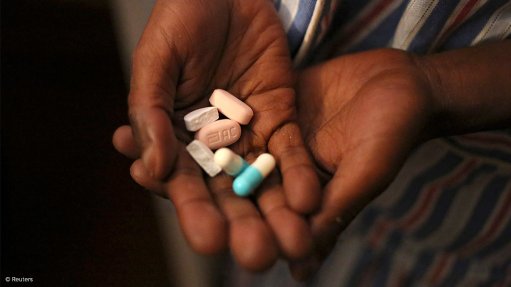
Photo by: Reuters
Over three-quarters of HIV positive Namibians have such low levels of the virus in their bodies that they are “virally suppressed”, making Namibia the first country in Africa to meet this global target.
Namibian Health Minister Bernard Haufiku told the International AIDS Conference in Amsterdam that the results were based on a household survey of 23,000 Namibians.
The global target set by the Joint UN Agency on AIDS (UNAIDS) is for 73% of people on antiretroviral treatment to be virally suppressed by 2020, but Namibia had already exceeded this target three years early, with 77% of people virally suppressed.
“This means we are on track to control the HIV epidemic, because treatment is also prevention,” said Haufiku, referring to the fact that people with viral suppression are no longer infectious and highly unlikely to pass HIV to others.
Namibia has managed to reduce its rate of new HIV infections by 50% over the past three years.
Meanwhile, Eswatini (Swaziland) has managed to reduce its rate of new HIV infections by 44% since 2011 by offering all people with HIV immediate access to ARVs – an approach called “universal test and treat”. In the past, people with HIV had to wait for their CD4 count to drop before they were allowed to get ARVs.
“This is the first time that treatment as prevention is proven to work, not just in a research setting, but on a large scale in real life,” said Dr Velephi Okello, from eSwatini’s health ministry.
South Africa has also reduced its rates of new infections by 44%, according to the HSRC Household study released last week.
Meanwhile, a Botswana study reported that a package of interventions, including expanded HIV testing, earlier treatment and male circumcision, led to a 30% cut in new HIV infections over 30 months.
“It is great to get some good news from southern Africa, the region where I am from,” said Professor Linda-Gail Bekker, President of the International AIDS Society and International Chair of AIDS 2018.
“The data presented today underscore both the urgent need and the opportunity to invest in expanded HIV prevention and treatment programmes that can turn back the epidemic in Africa.”
However, UNICEF warned that 9.6 million young people aged 15 to 24 years will be newly infected with HIV in sub-Saharan Africa between 2017 and 2050.
“About two-thirds of these will be girls or young women,” said Aleya Khalifa of UNICEF. “Young people in sub-Saharan Africa will require better access to HIV prevention, sexual and reproductive health, and targeted testing services.”